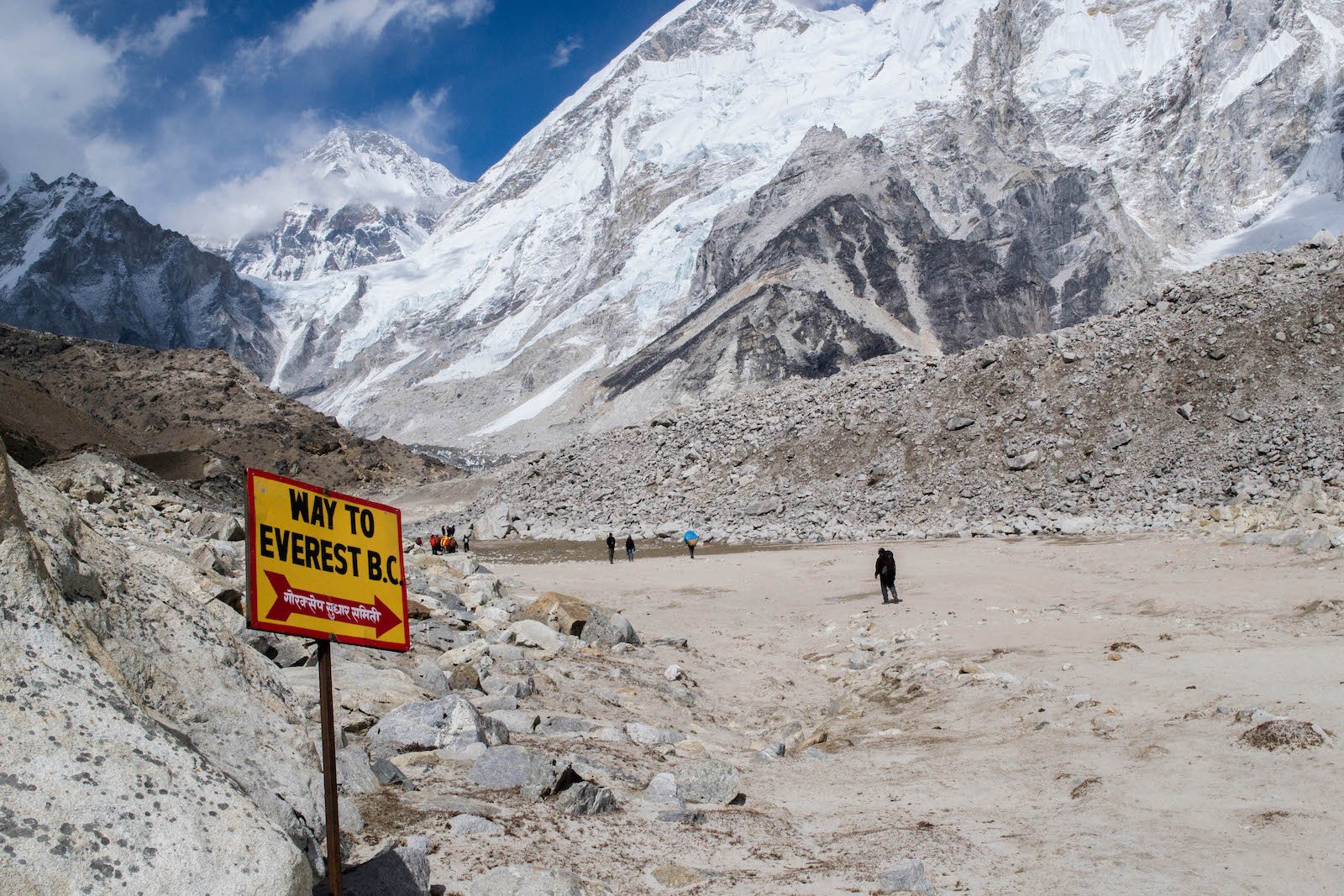Everything You Need to Know About an Everest Base Camp Trek
Sooooo, you’re thinking about visiting Mount Everest? You have a Base Camp trek in your sights. But you also have questions. Very many questions. Well, you’ve come to the right place! In this blog we’re going to be dealing with all the questions we’re most often asked about trekking to Everest Base Camp.
Everest Base Camp Trek: Your Questions Answered
What is the Everest Base Camp height?
Everest has two Base Camps. The North Base Camp is in Tibet and situated at an altitude of 5,5150m. The South Base Camp is in Nepal at 5,364m above sea level.
What is the Everest Base Camp temperature?
In October, when we conduct most of our Everest Base Camp treks, the typical temperature is only slightly lower than in the UK – ranging between 0°C and 9°C. In summer, temperatures can reach 22°C. In winter, nighttime temperatures can drop to -17°C.
Is the Everest Base Camp trek difficult?
The Everest Base Camp trek in Nepal is more about endurance than climbing skill. It’s essentially a really long walk at altitude. So, although it is physically demanding, it isn’t necessarily something that requires climbing experience.
How long is the Everest Base Camp trek?
The return trek to Nepal’s Everest Base Camp is 130km. The time it takes to traverse that distance depends on the individuals involved. But typically, the trek will take around 12-14 days.
When is the best time to do the Everest Base Camp trek?
We plan our treks early and late in the year when conditions are fairly stable. The monsoon season (May-September) is over, and yet temperatures haven’t yet had time to drop too far. Making camping and trekking more comfortable.
Is an Everest Base Camp trek worth it?
Yes. Without question. You don’t have to risk your life climbing to the summit to appreciate the unique splendour of Everest. It is breathtaking in its enormity. And stunning in its purity – despite the trekkers and campers! Seeing Everest close up, standing on its base viewing it from the proximity of Island Peak will change your life.
How to prepare for an Everest Base Camp trek
If there’s one thing you can be certain of if you’re planning an Everest Base Camp trek it’s that you’ll be doing a lot of walking. So, the best way to prepare is to get on your feet and start walking. Endurance training and strength training can help. Cardiovascular health is a must. And altitude training can be hugely beneficial – if awkward to manage.
What to pack for an Everest Base Camp Trek?
Above and beyond anything else, you need a really good pair of walking boots if you’re planning a trek to Everest’s Base Camp. They need ankle support, and they should be properly worn in. On top of that, you need sunblock, layered clothing, waterproofs, and a good backpack. You also need to remember drinking bottles, water purification tablets, and, ideally, a steri-pen.
What is the risk of an Everest Base Camp avalanche?
Because Mount Everest is in an active earthquake zone, the risk of Base Camp avalanche is pretty high. The most significant recent avalanche event was in 2015, when at least 22 people are sadly known to have died. Smaller Base Camp avalanches occur most years.
What food is available in the Everest Base Camp?
The Everest Base Camp trek is popular, and the local communities have maximised its potential with the provision of almost endless eateries. You can cater for practically any diet. So, although you can bring your own food, there’s really no need to.
How much does an Everest Base Camp trek cost?
At the Choose a Challenge, we organise treks to Everest’s Nepal Base Camp. Fees vary year on year. Check out the itinerary, prices, and availability over on our dedicated Everest trek page.
If you enjoy hiking, love new cultural experiences, and are looking for your next buck list challenge, an Everest Base Camp trip could be just the thing for you.
Find out more about Everest Base Camp treks here.

